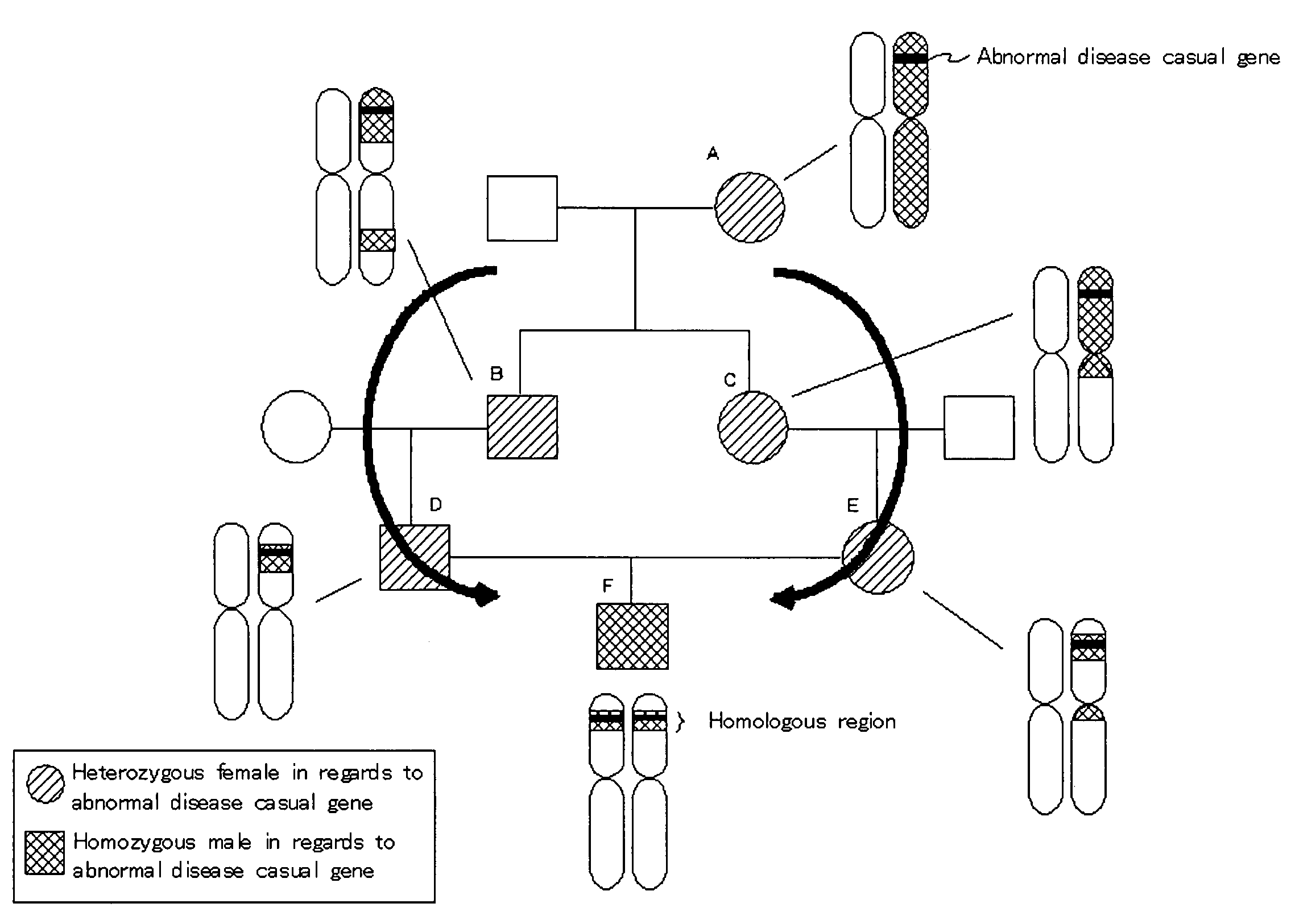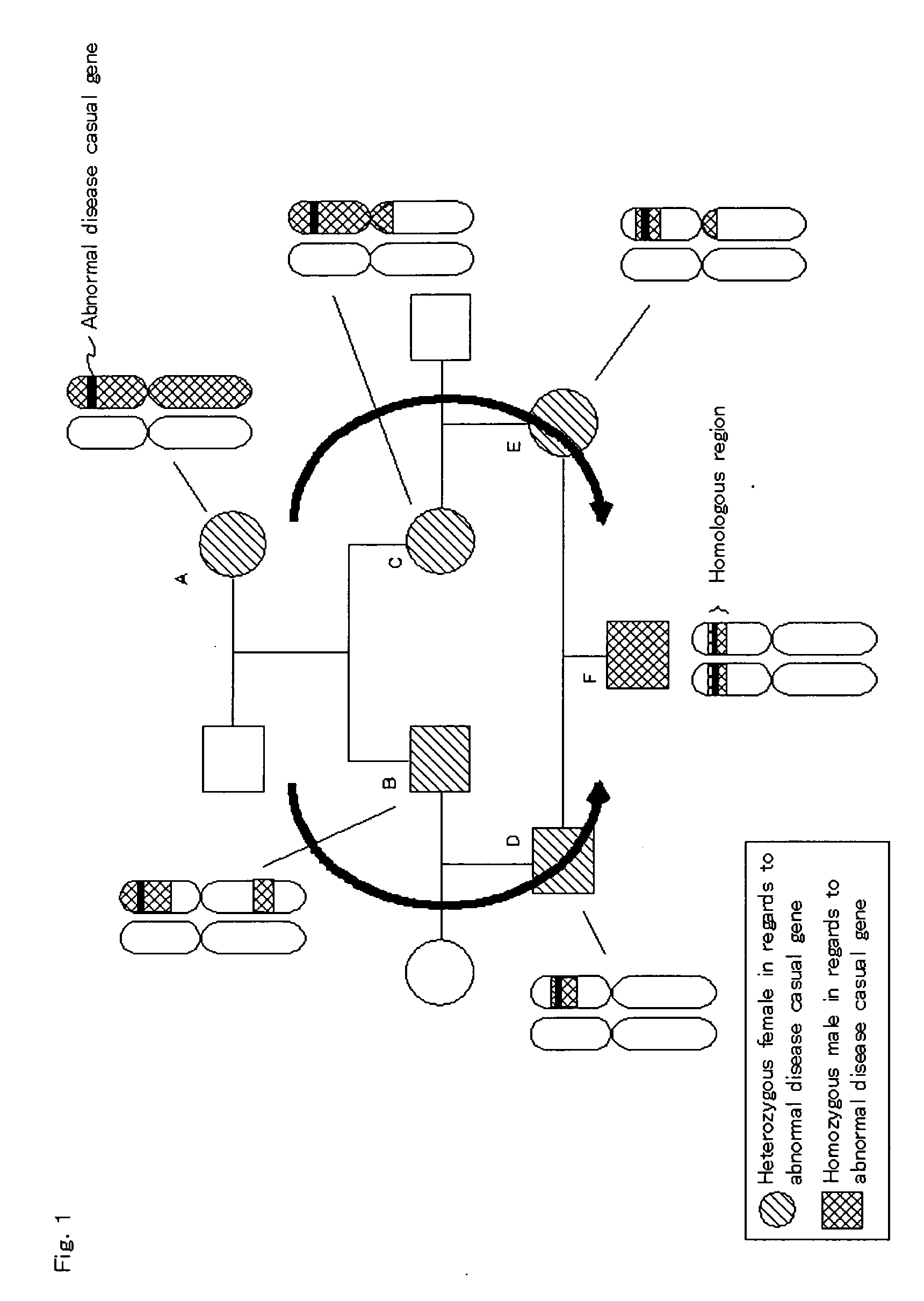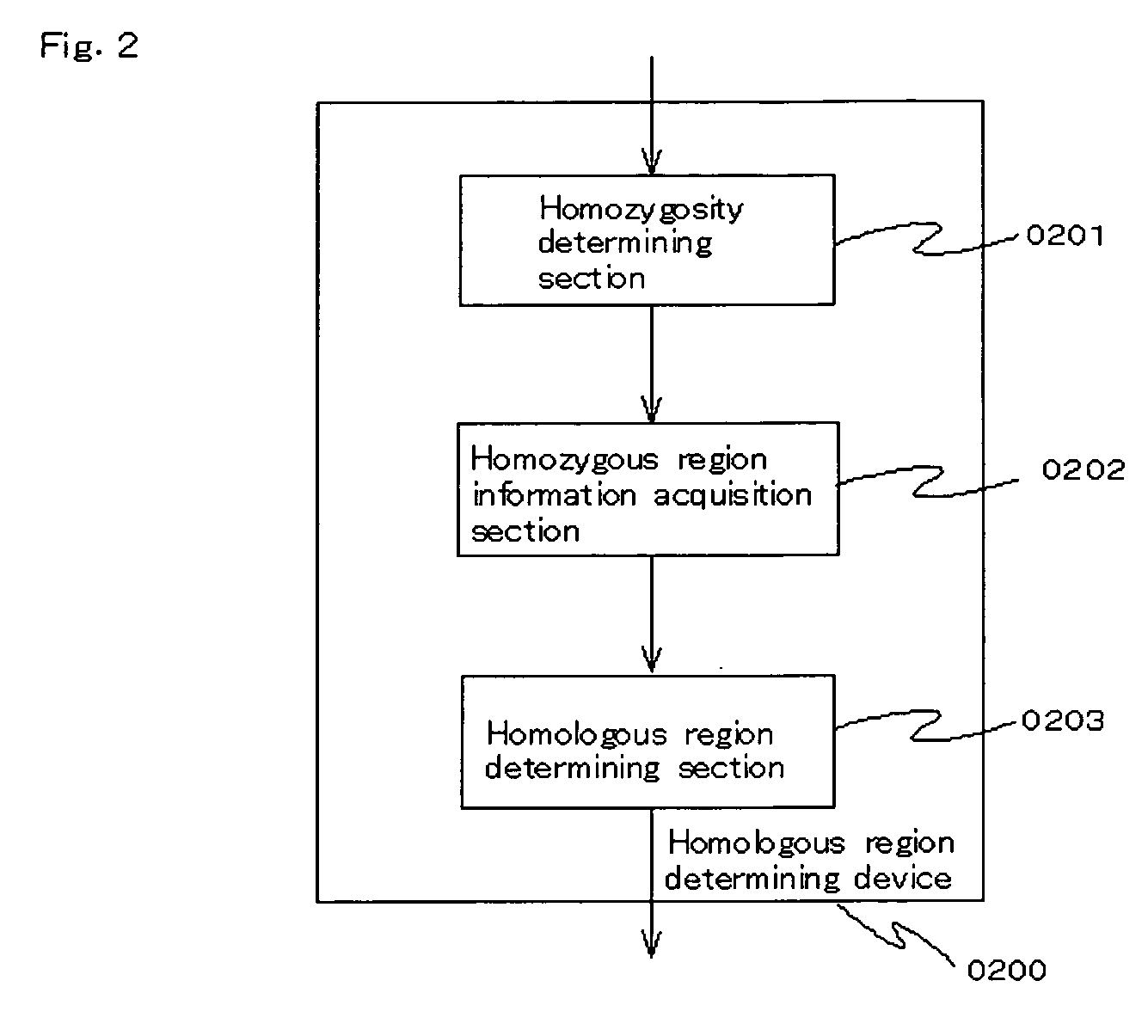Homoeologous Region Determining Method by Homo Junction Fingerprint Method, Homoeologous Region Determining Device, and Gene Screening Method
- Summary
- Abstract
- Description
- Claims
- Application Information
AI Technical Summary
Benefits of technology
Problems solved by technology
Method used
Image
Examples
first embodiment
Structure of a First Embodiment
[0078]A first embodiment is explained hereinafter. An example of a functional block of the embodiment is shown in FIG. 2. The homologous region determining device of the embodiment (0200) comprises the homozygosity determining section (0201), the homozygous region information acquisition section (0202), and the homologous region determining section (0203).
[0079]The homozygosity determining section (0201) is configured so as to determine whether or not bases comprising polymorphic markers in sample DNA indicating a state of diploidy or polyploidy indicate homozygosity. As a polymorphism typing method, the PCR-SSCP, PCR-RFLP, direct sequencing method, MALDI-TOF / MS method, TaqMan method, invader method, and the like can be used. The homozygosity determining section (0201) determines whether bases for which typing has been conducted via the aforementioned methods indicate homozygosity or not.
[0080]“Sample DNA” is genome DNA that serves as a sample used for...
second embodiment
Configuration of the Second Embodiment
[0098]Explanations are hereinafter given with reference to the second embodiment. An example of a functional diagram of the embodiment is shown in FIG. 6. The homologous region determining device (0600) of the embodiment comprises the polymorphic marker selection section (0601), the homozygosity determining section (0602), the homozygous region information acquisition section (0603), and the homologous region determining section (0604).
[0099]The polymorphic marker selection section (0601) is configured so that polymorphic markers as the subject of determination regarding homozygosity are selected from among polymorphic markers of sample DNA indicating a state of diploidy or polyploidy. “Polymorphic markers as the subject of determination regarding homozygosity” refers to the polymorphic markers that execute determination at the homozygosity determining section in regards to a subsequent section among DNA polymorphisms. It is not efficient to det...
third embodiment
Configuration of the Third Embodiment
[0106]A third embodiment of the present invention is explained hereinafter. An example of a functional diagram of the embodiment based on the first embodiment is provided in FIG. 8. The homologous region determining device (0800) of the embodiment comprises a homozygosity determining section (0801), a homozygous region information acquisition section (0802), a homologous region determining section (0803), the homologous region information preservation section (0804), and a homologous region information preservation section (0805).
[0107]The homologous region information preservation section (0804) is configured so that multiple pieces of the homologous region information showing a region that has been determined as being a homologous region by the homologous region determining section (0803) are preserved in response to multiple samples. “Homologous region information” refers to information showing a region that has been determined as being a homo...
PUM
| Property | Measurement | Unit |
|---|---|---|
| Frequency | aaaaa | aaaaa |
| Crystal polymorphism | aaaaa | aaaaa |
Abstract
Description
Claims
Application Information
 Login to View More
Login to View More - R&D
- Intellectual Property
- Life Sciences
- Materials
- Tech Scout
- Unparalleled Data Quality
- Higher Quality Content
- 60% Fewer Hallucinations
Browse by: Latest US Patents, China's latest patents, Technical Efficacy Thesaurus, Application Domain, Technology Topic, Popular Technical Reports.
© 2025 PatSnap. All rights reserved.Legal|Privacy policy|Modern Slavery Act Transparency Statement|Sitemap|About US| Contact US: help@patsnap.com



